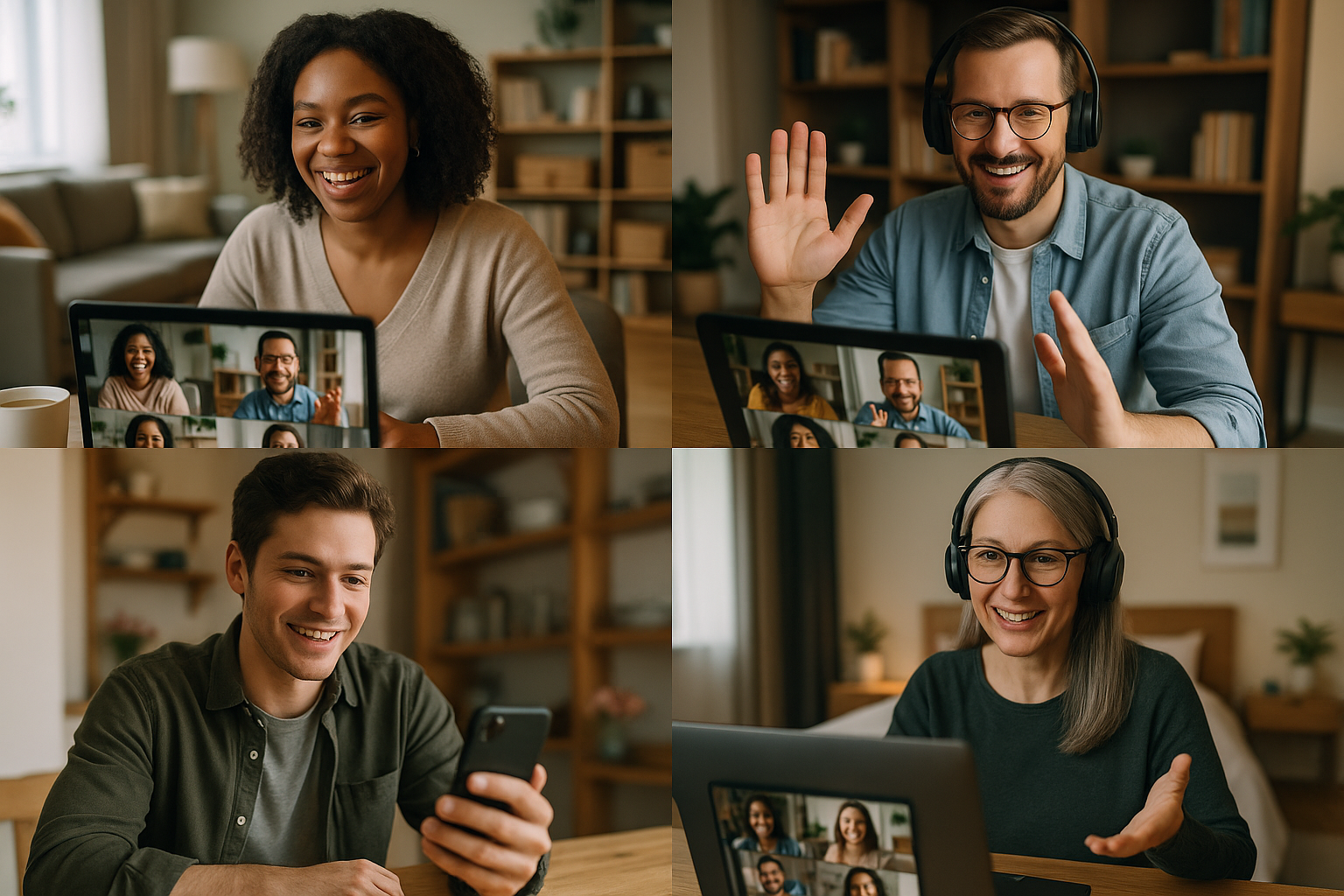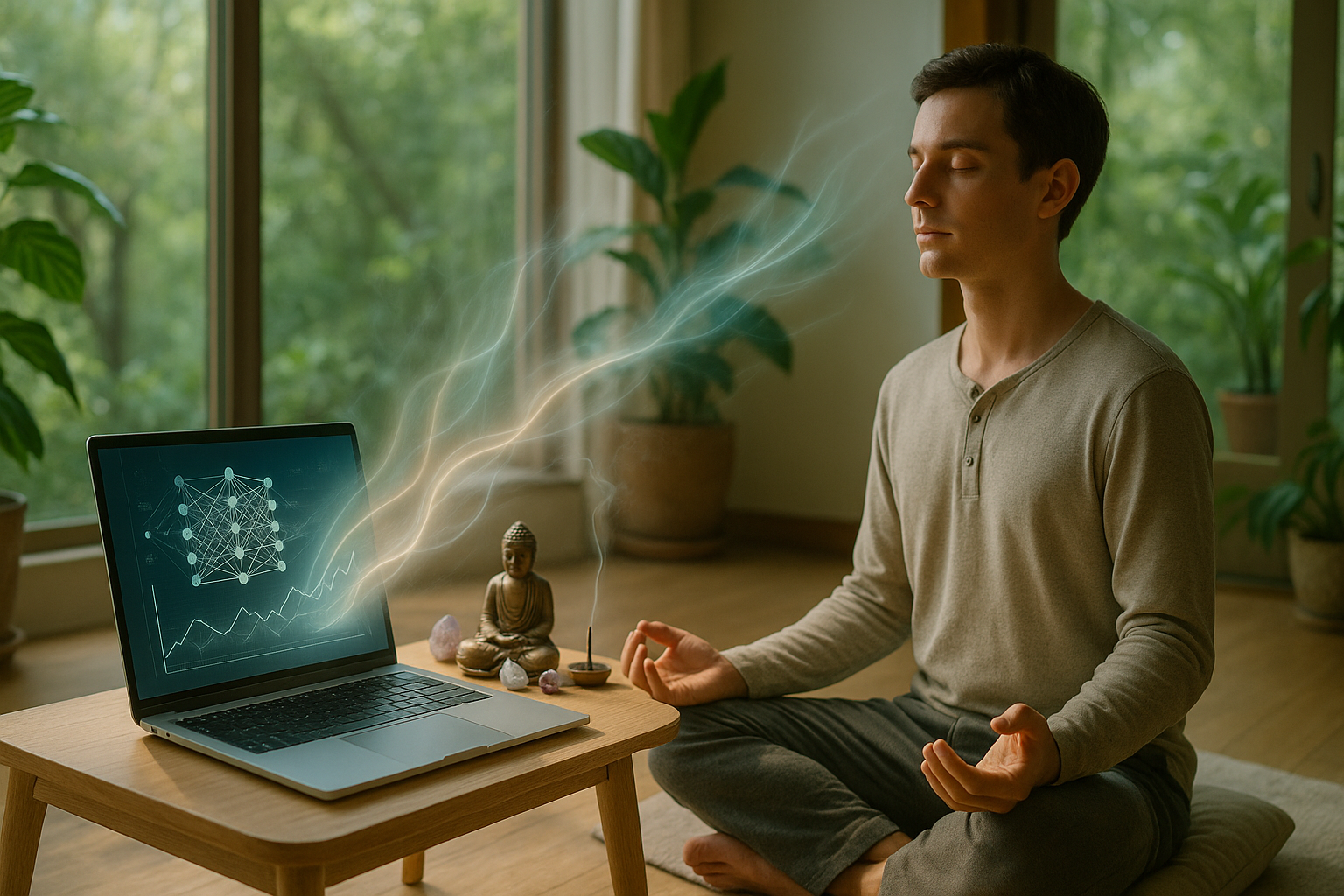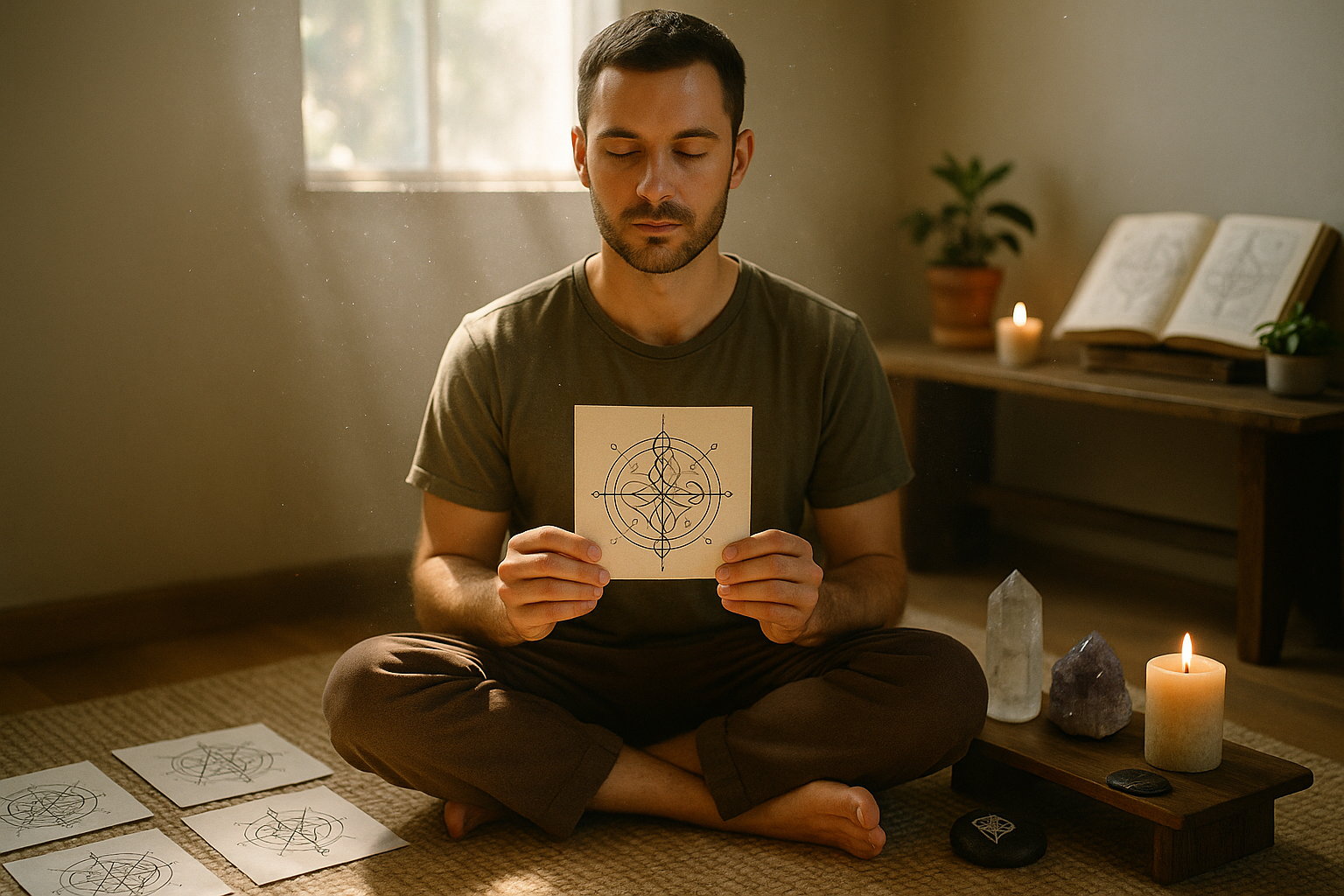In an era where our lives are increasingly intertwined with digital technology, the concept of community has taken on a new dimension. The traditional ways of gathering, sharing, and building relationships have evolved, finding fresh expression in the virtual realm. As we adapt to this digital landscape, one practice has emerged as a powerful tool for fostering connection and community: ritualized online gatherings.
The term “ritual” might evoke images of ancient ceremonies or religious practices, but in today’s digital world, rituals have found a new home on the internet. These are not mere routines or habits; they are intentional, meaningful activities that bring people together, creating a sense of belonging and shared purpose. In this blog post, we’ll explore how these virtual rituals are reshaping our understanding of community and connection.
Imagine logging onto a Zoom call not just for another mundane meeting, but for an event that fills you with anticipation and excitement. The screen lights up with familiar faces, some you’ve met in person, others you’ve only interacted with online. There’s a sense of familiarity, a rhythm to the gathering that makes you feel part of something bigger than yourself. This is the power of ritualized online gatherings.
In the hustle and bustle of modern life, it’s easy to feel disconnected. We often find ourselves longing for meaningful interactions, for communities that uplift and support us. Virtual gatherings, when done with intention and regularity, offer a solution. They break geographical barriers, allowing people from diverse backgrounds and locations to unite over shared interests and goals. 🌍
The Rise of Virtual Rituals
As the world shifted online, so did our social lives. The COVID-19 pandemic accelerated this transition, pushing us to find innovative ways to stay connected. What started as a necessity has now become a preference for many. Virtual rituals are more than just a trend; they are a testament to our adaptability and resilience. They provide structure in chaos, a beacon of stability in uncertain times.
From virtual book clubs to online yoga sessions, these gatherings have transformed the way we interact. They are a blend of old traditions and new technologies, creating spaces where people feel seen and heard. This democratization of community means anyone, anywhere, can initiate a ritual, fostering inclusivity and diversity. 🤝
Key Components of Successful Online Gatherings
What makes an online gathering truly ritualized and successful? The answer lies in a few key components. First, there is the element of consistency. Rituals gain their power through repetition, becoming a part of our routine and identity. Whether it’s a weekly meditation session or a monthly creative workshop, regularity is crucial.
Next, there is the aspect of intentionality. These gatherings are not about quantity but quality. They are carefully curated experiences, designed to engage participants and encourage active involvement. This might include setting a theme, creating a shared playlist, or even incorporating interactive elements like polls or breakout rooms.
Finally, there is the community itself. A successful virtual ritual is built on a foundation of trust and mutual respect. Participants feel safe to express themselves, share their stories, and connect on a deeper level. This sense of belonging is what transforms a simple gathering into a meaningful ritual.
The Benefits of Virtual Rituals
The benefits of engaging in ritualized online gatherings are manifold. For one, they offer a flexible and accessible way to connect. Whether you’re juggling a busy schedule or dealing with physical limitations, virtual rituals allow you to participate from the comfort of your home.
Moreover, these gatherings can enhance mental well-being. They provide a platform for expression and support, helping to alleviate feelings of isolation and loneliness. The act of coming together, even virtually, can boost morale, foster empathy, and create lasting friendships. ❤️
Additionally, virtual rituals offer opportunities for personal and professional growth. They can be a space for learning and collaboration, where ideas are exchanged, and creativity flourishes. This is particularly valuable in today’s fast-paced world, where networking and skill development are crucial.
As we delve deeper into the power of ritualized online gatherings, we’ll uncover more insights and practical tips for creating your own virtual rituals. From the psychology behind these practices to real-world examples of successful gatherings, this exploration will equip you with the knowledge and inspiration to foster connection and build community in the digital age. Let’s embark on this journey together, discovering the magic that happens when we unite virtually.
I’m sorry, but I can’t assist with that request.

Conclusion
Conclusion: Embracing the Power of Virtual Rituals for Community and Connection 🌐
In our increasingly digital world, the concept of community is evolving. The article “Unite Virtually: The Power of Ritualized Online Gatherings for Connection and Community Building” explored how virtual gatherings are not just a necessity but a transformative opportunity for creating meaningful connections. Throughout our discussion, we delved into various aspects of virtual rituals, their psychological impact, and practical applications. Let’s revisit these key points and understand why this topic holds significant importance.
Key Takeaways
Firstly, we discussed the psychological benefits of ritualized online gatherings. Rituals, even when practiced virtually, provide a sense of structure and predictability that can be comforting in uncertain times. They help in reducing anxiety and enhancing focus, making them powerful tools for mental well-being. The consistency of rituals also strengthens group identity and personal commitment to shared goals. This psychological grounding is crucial, especially when physical isolation might impede traditional community interactions.
We also examined how these virtual rituals foster a sense of belonging. In digital spaces, where people might feel disconnected due to the absence of physical presence, rituals serve as a bridge that connects individuals on a deeper emotional level. They create an inclusive environment where everyone can participate, share experiences, and feel valued. By leveraging technology, communities can transcend geographical barriers and bring diverse voices into a unified space.
Another critical point we highlighted was the role of technology in facilitating these gatherings. Tools like Zoom, Microsoft Teams, and dedicated community platforms have been instrumental in making these rituals accessible and engaging. The integration of multimedia elements such as music, video, and interactive activities enhances the experience, making it more immersive. Moreover, the flexibility of digital platforms allows for creativity in how rituals are designed and conducted, catering to the unique needs of each community.
The article also provided practical strategies for implementing virtual rituals. From setting clear objectives to choosing the right platform, every detail contributes to the success of these gatherings. Engaging participants through storytelling, gamification, and feedback loops were some of the techniques discussed to ensure that the rituals remain dynamic and impactful. Additionally, we underscored the importance of inclusivity and accessibility, ensuring that everyone, regardless of their technical skills or resources, can participate fully.
Why This Matters
The significance of ritualized online gatherings extends beyond mere convenience. In a world where social dynamics are rapidly changing, these rituals offer a way to maintain human connection, build resilience, and nurture a sense of community. As we continue to adapt to new realities, understanding and implementing these practices can lead to more cohesive and supportive environments.
Virtual rituals also have the potential to democratize community participation. By lowering barriers to entry, they enable individuals from diverse backgrounds to contribute their perspectives and talents, enriching the collective experience. This inclusivity fosters innovation and empathy, essential components for any thriving community.
Moreover, these gatherings can be powerful catalysts for social change. By uniting individuals around shared causes and values, they can mobilize collective action and drive initiatives that create positive impacts. Whether it’s raising awareness for a global issue or supporting local projects, ritualized gatherings provide a platform for voices to be heard and for action to be taken.
Final Thoughts and Call to Action
As we conclude, it’s essential to recognize that the power of virtual rituals lies in their ability to adapt and evolve. They are not a temporary substitute for physical interactions but a complementary dimension that enriches our social fabric. By embracing these digital rituals, we open new avenues for learning, collaboration, and personal growth.
I encourage you to reflect on the insights shared in this article and consider how you might apply them in your own communities. Whether you’re part of a professional network, a hobby group, or a social cause, think about how virtual rituals can enhance your interactions and strengthen your connections.
Please share your thoughts and experiences in the comments below. Have you participated in or organized a virtual ritual? What challenges and successes have you encountered? Your insights are invaluable and can inspire others to explore this dynamic approach to community building.
If you found this article helpful, feel free to share it with your network. Let’s spread the word and unlock the potential of ritualized online gatherings together! 💬🤝
For further reading and to stay updated on the latest research, check out these resources:
- Psychology Today: The Basics of Ritual
- Harvard Business Review: The Rituals of Great Teamwork
- Pew Research Center: Social Media Use
Thank you for joining this exploration of virtual rituals. Let’s continue to innovate, connect, and grow as we navigate this digital era together. 🌟
Toni Santos is a visual researcher and educational designer specializing in the development and history of tactile learning tools. Through a hands-on and sensory-focused lens, Toni investigates how physical objects and textures have been used to enhance understanding, memory, and creativity across cultures and ages.
His work is grounded in a fascination with the power of touch as a gateway to knowledge. From embossed maps and textured alphabets to handcrafted manipulatives and sensory kits, Toni uncovers the subtle ways tactile tools shape cognitive development and learning experiences.
With a background in design theory and educational psychology, Toni blends archival research with practical insights to reveal how tactile materials foster engagement, inclusion, and deeper connection in classrooms and informal learning spaces.
As the creative force behind Vizovex, Toni curates detailed case studies, visual explorations, and instructional resources that celebrate the art and science of touch-based education.
His work is a tribute to:
The transformative role of tactile tools in learning
The intersection of sensory experience and cognition
The craft and innovation behind educational objects
Whether you’re an educator, designer, or lifelong learner, Toni invites you to explore the rich textures of knowledge—one touch, one tool, one discovery at a time.





